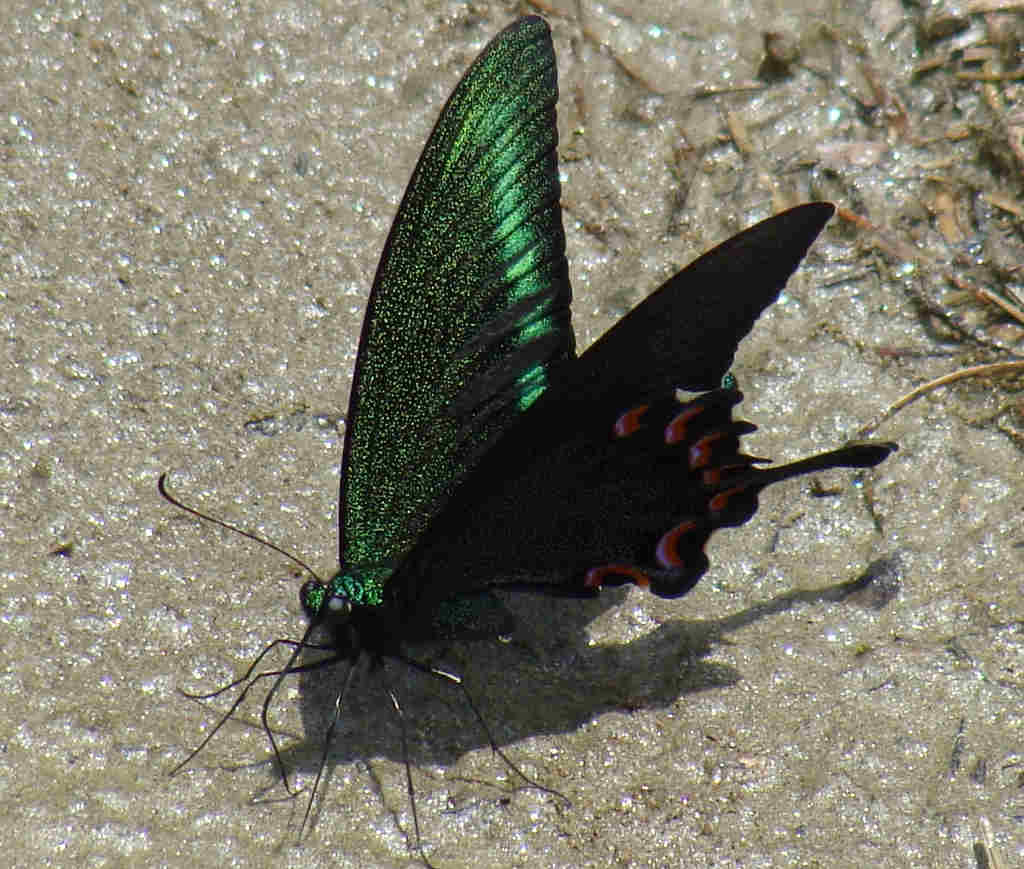
Papilio polyctor (Common Peacock)
Papilio polyctor – The Stunning Common Peacock of GHNP
Papilio polyctor, popularly known as the Common Peacock, is one of the most eye-catching butterflies found in the Great Himalayan National Park (GHNP). With its shimmering, iridescent blue and green wing patterns and graceful flight, this butterfly is a favorite among photographers and butterfly enthusiasts visiting the park.
| Common Name | Common Peacock |
| Scientific name | Papilio polyctor |
| Family | Papilionidae |
| Description |
The upper side of Papilio polyctor‘s wings is decorated with metallic green bands and a characteristic peacock-like eyespot near the hindwing, giving it both its name and its charm. The undersides are darker, more cryptic, aiding camouflage when the butterfly rests on tree trunks or rocks. This stunning coloration isn’t just for show—it helps confuse predators and gives the butterfly a fighting chance to escape. This species is most commonly sighted at elevations between 1,200 and 2,500 meters, flitting through forest clearings, along rivers, and on sun-drenched trails. GHNP’s diverse flora provides an ideal habitat for the butterfly’s life cycle—from egg-laying to feeding and metamorphosis. Papilio polyctor lays its eggs on plants from the citrus family, especially those native to the Himalayan region. The caterpillars feed on the leaves of these host plants, eventually forming green chrysalises that blend well with their surroundings. Adults feed on nectar from wildflowers, and their fast, erratic flight pattern makes them both elusive and mesmerizing to observe. As a pollinator, Papilio polyctor contributes significantly to GHNP’s ecological balance. Its presence signals a well-preserved and biodiverse environment—something GHNP takes pride in preserving. Interested readers may also explore more about related species like Papilio machaon or delve deeper into the park’s GHNP Fauna collection. |



